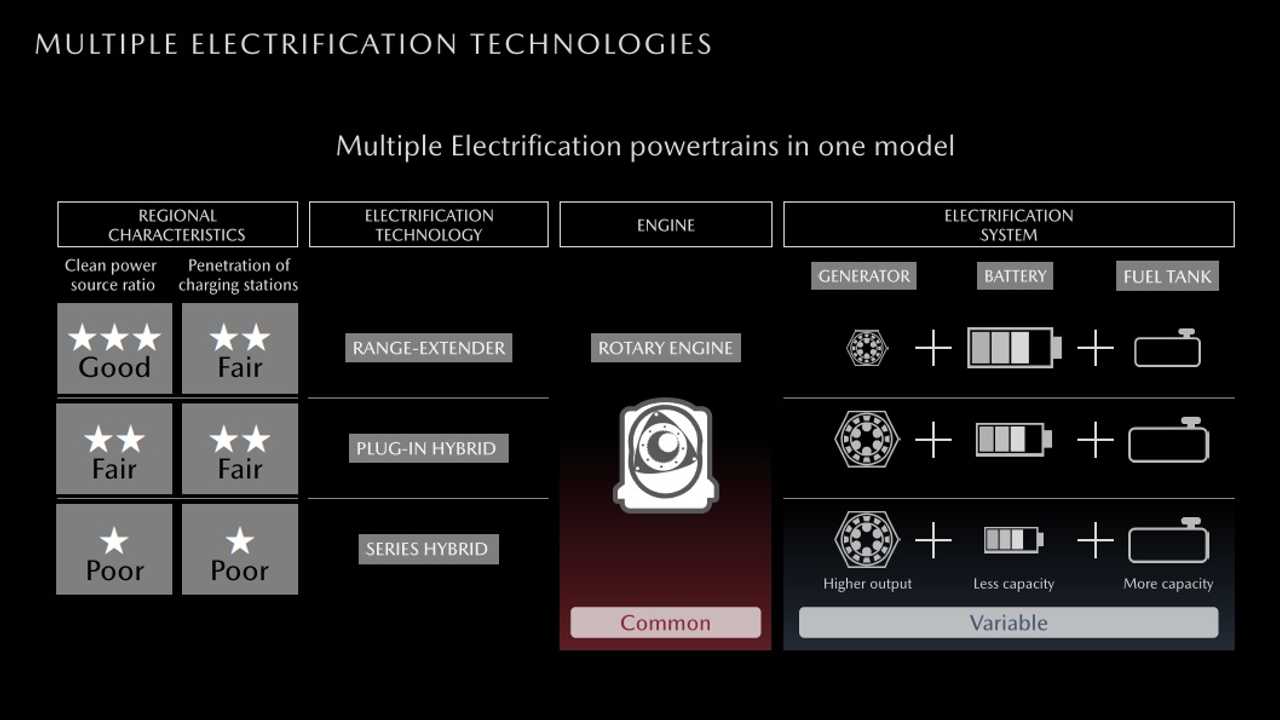It relies on the plug-in hybrid arrangement and on a rotary engine.
Mazda will finally give in to electric mobility at the 2019 Tokyo Motor Show. But not quite. The first electric effort from the company – embodied by the e-TPV concept – claims small battery packs are the best, with the lowest CO2 emissions along a 100,000-mile (160,000 km) cycle. Right.
The e-TPV is basically a CX-30 with some changes to present the idea to journalists. It has a small battery pack of only 35.5 kWh, which has the same size as that installed at the Honda E.
The main difference is that Honda’s urban EV will have only that battery pack as its source of energy. The e-TPV also counts on an internal combustion engine.
Mazda will present an entirely new concept at the 2019 Tokyo Motor Show. It will already feature a dedicated platform and a different engine. While the e-TPV prototypes had the same engines offered by the CX-30 – probably 2-liter SkyActic G units – the concept will have a rotary engine under the hood.
Praised for its efficiency – for a combustion engine – and for its compactness, the Wankel will be used by Mazda in all its electrified products. From a pure electric vehicle with a range extender to a hybrid, depending on the market.

According to Mazda, places in which energy production is clean and with a fair amount of charging points will receive the EV with the range extender. Countries in which energy production is dirtier but yet with a good number of charging spots will get the plug-in hybrid. Markets with dirty electricity generation and weak charging points offer will get a hybrid.
Anyway, there’s a difficult-to-swallow part in Mazda’s presentation to the press. It claims that over 100,000 miles a car with a small battery pack will emit much less CO2 than a BEV with a 95 kWh battery pack.

With the graphic above, Mazda wants us to believe a 95 kWh BEV will be dirtier than the latest Mazda3, internally codenamed FB. Are they talking about one with the SkyActiv X engine? Even if they were, that would be very unlikely.
In which world does a battery pack have to be replaced after 100,000 miles to “maintain performance”? Tell that to the 560,000-miles (900,000-km) Tesla Model S from Hansjörg Gemmingen.
It is reportedly on its second battery pack. According to Mazda’s reasoning, it would be on its fifth. If you know Gemmingen, ask him to get in touch for us to know if that is true and when he had to replace the battery pack.
We hope Mazda presents its numbers most credibly than with this cryptic graphic in the future. As it is, it just seems like an effort from a mainstream manufacturer to try to stop the BEVs from beating all their efforts at staying alive.

